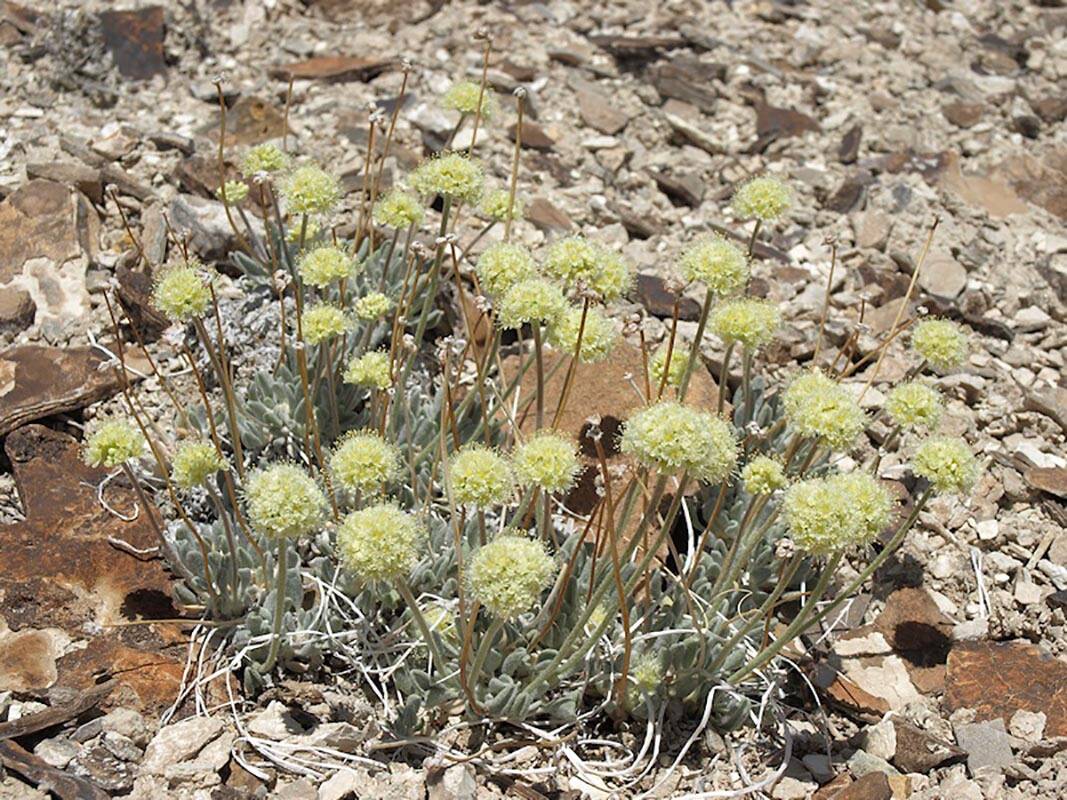As Rhyolite Ridge lithium project advances, environmental activists plan fight
SILVER PEAK — A final environmental review began Monday to advance a major lithium mining project, less than 40 miles southwest of Tonopah.
It comes just a week after the U.S. Fish and Wildlife Service declared protections for a rare Nevada wildflower that opponents say is threatened by the planned Rhyolite Ridge Lithium-Boron Project.
Rhyolite Ridge, proposed by Australia-based Ioneer Ltd, is the first lithium project to be issued a “notice of intent” under the Biden administration to potentially operate.
The U.S. Bureau of Land Management will be scoping public comments over a 30-day period that spans the holidays to gather input that will guide in the final planning stages of the mining operation.
Company officials say they hope to receive a greenlight to commence construction sometime in the first quarter of 2024. Under a timeline provided by the company, the mine’s production could begin as early as 2026.
“We see this as a significant step toward ensuring a strong domestic supply of critical minerals and strategic materials necessary for development of a domestic battery supply chain essential to the electrification of transportation in the U.S.,” Ioneer’s Executive Chairman James Calaway said Monday.
This week marks a milestone toward the realization of the Rhyolite Ridge Lithium-Boron Project and reflects the hard work and dedication of the Ioneer and Stantec teams working closely with the BLM and cooperating agencies, according to Ioneer Managing Director Bernard Rowe.
“Our project is uniquely positioned in the U.S., and has been engineered to ensure a stable, long-term, environmentally sustainable source of lithium.”
It’s expected to produce enough lithium to help sustain the manufacturing productions of 400,000 electric vehicles annually over many decades, Rowe said.
“In delivering this world-class project, Ioneer will help the U.S. create a domestic supply of lithium for auto manufacturers, quadrupling the current domestic supply, critical to meeting the climate goals established by the Biden administration, while also positively impacting the Nevada economy,” he said.
The Rhyolite Ridge project is expected to fuel 400-500 construction jobs and 250-300 operating jobs to help diversify the Nevada economy, according to Ioneer estimates.
It’s unclear how many positions will be based in Esmeralda County or what the average rate of pay will be.
Last year, Ioneer secured the environmental air-quality and water-pollution permits required to commence construction.
But a battle lingered as environmentalists petitioned federal officials to reject the project, which they say threatens the existence of the Tiehm’s buckwheat, which grows exclusively on 10 acres of lithium-rich land where the mining operation is planned.
Patrick Donnelly, Great Basin director at the Center for Biological Diversity, which fought successfully to have the plant protected last week under the federal Endangered Species Act, said Monday that activists would continue to fight Ioneer as it seeks to gain final approval to operate.
“Rhyolite Ridge mine poses an existential threat to Tiehm’s buckwheat, and we’re gearing up for a fight,” he said. “The recent endangered species listing gives us the most powerful tool in the conservation toolbox to prevent the extinction of this rare, beautiful wildflower.”
In the Endangered Species Act listing for Tiehm’s buckwheat, published Friday, the U.S. Fish and Wildlife Service said Ioneer’s plan could “disturb and remove up to 38 percent of the critical habitat for this species, impacting pollinator populations, altering hydrology, removing soil, and risking subsidence.”
In addition to protecting Tiehm’s buckwheat as an endangered species last week, the service also protected 910 acres of critical habitat for the rare wildflower, which includes the plants and a 500-meter buffer.
Ioneer officials say there are no “project-related direct impacts to any of the subpopulations of Tiehm’s buckwheat” under its latest plan.
Just weeks ago, fish and wildlife officials gave endangered species status to another rare Nevada endemic, the Dixie Valley toad, which they found is threatened by a geothermal power plant being proposed near its habitat.
“We have to transition to renewable energy to address the climate emergency, but we can’t wipe plants and animals off the planet in the process,” Donnelly said. “If the Biden administration wants the renewable energy transition to succeed, it needs to devise a plan that doesn’t drive species extinct.”
Those who would like to comment on the Rhyolite Ridge project may email BLM_NV_BMDO_TFO_NONRENEWABLE@blm.gov.
Contact Editor Brent Schanding at bschanding@pvtimes.com
















